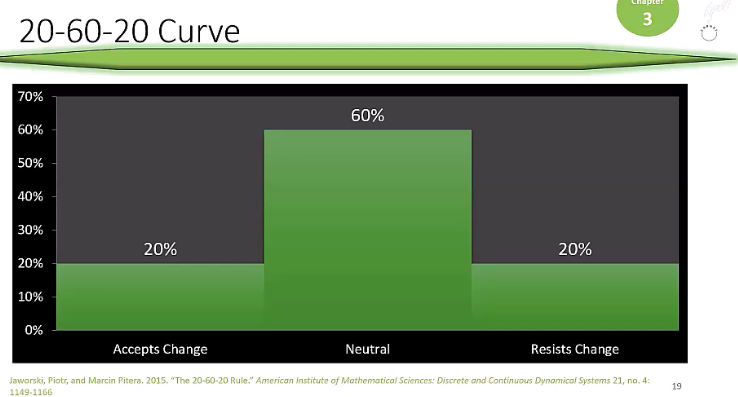Framework 172 Change Questions
Introduction
The aim is to help you understand your change by asking the right questions for your situation.
NB Every organisation has unique qualities, ie no 2 organisations are the same.
Need a customised approach for every change effort.
The 11 main questions are based on the below diagram
(source: Lynn Kelley, 2023)
Questions
A. Purpose
1. What is the situational problem you want to solve with the change initiative?
(This is linked with a purpose statement, ie what the change initiative is about and why are you doing this - in one short sentence)
2. What value will the change initiative deliver?
(Need to consider the impact on all stakeholders, like customers, employees, community, etc in developing a value statement; needs to be measurable, etc)
B. Design (do and improve)
1. What work changes are required as a result of the change initiative?
( Need to consider:
- Who will be impacted by the change and what are their perceptions about the change?
- What current practices, processes, etc going to be impacted by the change, ie what do staff have to do different?
- What do staff who do the existing work now believe how the new work should be developed?
- What are the customers needs and are they been satisfied
NB The deliverable is the design of the new work the change will take place.)
2. Can you conduct a pilot run to test the change initiative before it is fully launched?
(Need to consider:
- Need to determine what components, factors, etc that need to be evaluated in a pilot run
- How to leverage supportive change agents, ie identify the change supporters who have credibility in the organisation and use them to get others in the organisation onside. This means understanding change curve, ie 20% of people accept change, around 60% are neutral and 20% resist; the last group are using the most vocal and hopefully the least influential)
(source: Lynn Kelley, 2023)
NB The deliverable is establishing a viable pilot run using the supportive change agents so that gets authentic feedback on the potential change initiative, ie will it deliver the value expected, are the metrics suitable for measuring performance (include early indicators, etc), need to identify areas that require improvements, etc.
Types of pilot runs can include simulation, desktop studies, surveys (longitudinal, etc), questionnaires, etc; however, it needs to be as realistic as possible.
The pilot run helps demonstrate that the change works; with successes they need to be communicated to the whole organisation so that the neutral 60% become interested in the change.)
C. Engage and Develop (capability building more than just training
Need to consider:
1. What tools, resources, expertise, etc are necessary for staff to have the capability to implement change initiative(s)?
- Review the work done in the pilot run, ie determine its suitability for inclusion in the change initiative
- How should the relevant, necessary training be designed and delivered?
2. Is your communication plan consistent and proactively provides information to different stakeholders about change initiative?
- What is the vision for the change initiative?
- What are the key messages to support the vision?
- What are the most frequently asked questions and how are they addressed?
NB Communications is critical, especially around the
- vision that is motivating, concise and inspires the staff
- key messages that are consistent around the change (this could vary with different stakeholders)
Communications plan
(source: Lynn Kelley, 2023)
NB In any change initiative, you have to be able to handle 'WIFM' attitude, ie what's in it for me; this is the immediate reaction of people going to be impacted by change.
(for more details see elsewhere in the knowledge base)
3. How will you provide positive recognition (including incentives) to those who support the change initiative
- Who should be recognised?
- What kind of recognition(s) should be given?
- Are there any additional incentives/rewards that will help support the change initiative?
NB "...around 2/3 of employees are likely to leave their jobs because don't feel appreciated..."
Forbes as quoted by Lynn Kelley, 2023
This figure is considerably higher among millennials, ie around 80%.
Need to find ways to highlight successes so that staff feel appreciated.
D. Management Systems and Leadership
Definition of management system
"...A system that frames how activities are conducted to achieve the goals of an organisation..."
Lynn Kelley, 2023
Need to consider:
1. Does the existing management system support the change initiative?
- Does the existing infrastructure (organisational structure, reporting relationships, roles, responsibilities, metrics, policies, information flow, etc) support the change initiative?
- If not, what changes can you propose to leadership so that the existing management supports the change initiative?
NB The management system needs to support the change initiative.
2. How can leaders demonstrate active and visible support of the change initiative?
- What leadership behaviours will show support for the change initiative?
- What our leaders' concerns with the change initiative?
- How would you address these concerns?
NB Leaders need to 'walk the talk', ie it goes beyond words to actions!!
People will take ownership of something they create, ie it is theirs
E. Culture
Culture can be defined as embedded belief and values system, behaviours, etc that everyone shares in the organisation, ie how you communicate, react, respond, etc
1. Is your organisations culture supportive of the change initiative?
- What are the organisations beliefs, values, norms, attitudes and assumptions?
- How will your culture support and/or hinder your change initiative?
- What actions can you take to leverage culture to support the change and/or mitigate risk of culture hindering your change?
NB It is hard to change culture but easier to change behaviours.
